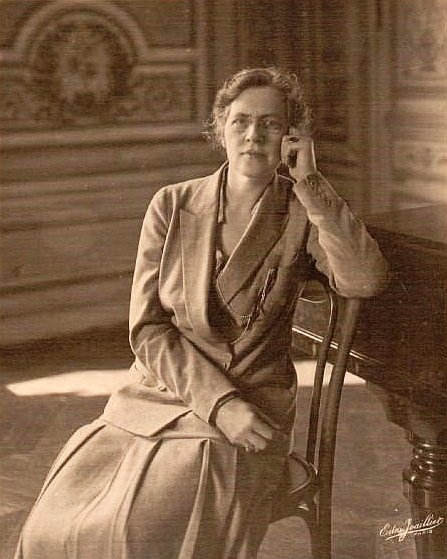Astor Piazzolla – Tango rEvolution
Composer portrait: Astor Piazzolla
One of the biggest interpreters of the history of Tango, Astor Piazzolla was born in the city of Mar Del Plata, in Argentina, in 1921. His family moved a few years later to the United States and Piazzolla lived in New York from 1924 to 1937.
In New York, he met one of the most famous tango interpreters of history, Carlos Gardel, who invited him to record various themes for his movie “El dia que me quieras“. Piazzolla was 14 years old.
Back to Argentina
In 1937 he went back to Argentina, where he started working, in Buenos Aires, as a bandoneoinist and arranger in the orchestra of another great tango interpreter, Anibal Troilo.
In 1940 he started studying with a composer who was soon to become one of the most prominent musical figure of Argentina: Alberto Ginastera and in 1946 he founded his first orchestra; taken more and more by composition, he left his own creature in 1950 to completely dedicate himself to writing.Despite the many awards already to his name, Piazzolla continued to study: conducting, with the great Hermann Scherchen, and composing with legendary Nadia Boulanger, in Paris, thanks to a scholarship of the French government.
Off to Paris with Dame Boulanger…

The encounter with Nadia Boulanger marked a crossroad for Piazzolla: tired of tango, he was sure that his destiny laid in classical music and tried to hide his “tanguero” past from her. Boulanger was not impressed…
…until he played his tango Triunfal, from which she was totally taken and insisted: “This is Piazzolla, never leave it!“. The hours spent on counterpoint in this period proved pivotal to his composing style.
…and back to Buenos Aires
Back in Buenos Aires, Piazzolla founded two new ensembles: the “Orquesta de cuerdas” and the “Octeto de Buenos Aires”, modeled on the octet of the American jazz saxophonist Gerry Mullighan, heard in Paris just before leaving. He also started playing the bandoneon standing up, with his right foot on a chair. Up until then, all bandoneonists were playing sitting down.
The octet was a turning point: not only in his career, but for the entire history of tango. Away from the traditional tango orchestra, the octet was composed of two bandoneons, two violins, cello, double-bass, piano and electric guitar. For the first time in history: no voice. This new approach to tango, the nuevo tango, earned him a lot criticism in his own country. However, the new style became highly popular in the United States and in Europe, while in Argentina it was supported by a minority of liberals, pushing for political changes along the cultural ones.
After a short parenthesis of a couple of years in New York, he re-established himself in Argentina, founded a new quintet and led various tournees all over South America.

In 1963 Paul Klecki conducted the premiere of “Tres tangos sinfonicos” for which Piazzolla was awarded the Hirsch Prize.
The tango-song
Soon after, Piazzolla started collaborating with numerous and prominent cultural figures of the time, Jorge Louis Borges and Horacio Ferrer among others. The partnership with Ferrer also gave light to a small tango opera, “Maria de Buenos Aires“, but above all marked the beginning of a new composing era for Piazzolla, the tango-song: the “Balada para un loco” became in 1969 the biggest success of the year. While more commercial in style, this approach gave him a chance to reach a wider audience: his concerts were not anymore attended only by an elite of people, but by the many who were recognizing in his music the true and most authentic expression of Buenos Aires musical heart.
Now a more than established composer, Piazzolla returned to Paris in 1970, continuing the joint venture with Ferrer in the oratorio “El pueblo joven” and in 1971 he’s back in Argentina, where the city of Buenos Aires contracted him for 2 years of concerts: Piazzolla would triumph in Caracas, Rio de Janeiro, San Paolo and Santiago del Cile, to finish off at the famous Teatro Colon in Buenos Aires (a huge concert, the preparation of which prevented him to work with film director Bernardo Bertolucci on the soundtrack of “Last tango in Paris“; to the movie he eventually dedicated a work titled “Jeanne y Paul“).
The end
Astor Piazzolla is one of the few composers who recorded all of his works, more than 600, writing for eminent classical musicians as well, like Salvatore Accardo (“Milonga en re“) and Mstislav Rostropovich (“Le grand tango“). The movie industry was charmed by his music as well, with films like “Henry IV” by Marco Bellocchio, “El exilio de Gardel” and “Sur” by Fernando Solanas, or “Twelve monkeys” by Terry Gillian.
Piazzolla died in Buenos Aires in 1992; a year later one of his most famous works, “Oblivion“, was nominated for the Grammy Awards for the best instrumental composition and in 1998 another famous work, “Libertango“, won the Grammy.
Sources:
“A. Piazzolla: A manera de memorias” by Natalio Gorin, HoyxHoy, 1998
Astor Piazzolla: chronology of a revolution
Le grand tango: Astor Piazzolla by Maria Susana Azzi and Simone Collier
Encyclopaedia Britannica – Le grand tango, for Mstislav Rostropovich
Cover photo by Angie Chun – CC Attribution-ShareAlike 2.0 license
About the author

Gianmaria Griglio
Composer and conductor, Gianmaria Griglio is the co-founder and Artistic Director of ARTax Music.
Interested in some more music? Take a look at this series!





